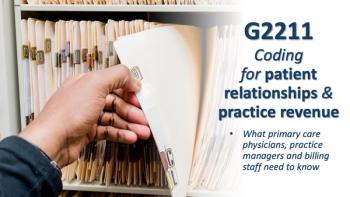
Dispelling Major Myths about Patient Engagement
The Cleveland Clinic’s Adrienne Boissy described how those in healthcare can overcome misconceptions about digital engagement at this year’s HIMSS17 conference.
At the Cleveland Clinic, a recent pilot study on patient engagement led one of its research teams to throw out a series of myths that muddy thinking about this critically important topic for those in health IT.
At this year’s Healthcare Information and Management Systems Society (HIMSS) conference in Orlando, Adrienne Boissy, MD, Cleveland Clinic’s chief experience officer, first gave a definition of “patient engagement,” based on one first offered by pioneer Judith Hibbard, PhD, MPH. “Patient engagement is behaviors that patients demonstrate to maximize greatest benefit from the healthcare resources available to them,” Boissy said. Forty-two specific behaviors contribute to patient engagement. “It’s very different form the number of downloads or clicks” of some digital health resource, she said repeatedly.
Boissy advised both clinicians and health IT staffers to consider patient engagement broadly by thinking of “person engagement.” This concept includes not only the behaviors of an individual but also those of that person’s close relations and community.
The pilot study and the myths
Her research group at The Cleveland Clinic research group worked with a team of orthopedic surgery patients, who had undergone hip and knee operations. The researchers connected these patients with HealthLoop, a digital platform designed to remind them at different points in their “care path” of what they should be doing. The platform provides education including videos as well as monitors and “checks in” on patients.
The pilot study began in 2014, and a year later, the physicians involved in the research wouldn’t give it up because “they were so into the technology,” said Boissy. So were the patients. Overall provider ratings went up year after year for clinicians participating in the pilot.
This development put to rest the first of several myths she went on to discuss:
Myth:Clinicians will push back on additional communication. It’s not true that they reject additional communications in a wholesale manner. What is true is that they want technological solutions to accomplish important goals. These goals include increasing practice efficiency, improving diagnostic accuracy, enhancing safety, decreasing burnout, or enhancing the relationship of the clinician with his or her patients. If health IT does one or more of these things, she told the audience, “You’ve found the sweet spot.”
Myth: Technology will only be adopted by certain populations. While it’s often assumed that “young” equals “tech-savvy,” the pilot found that 61-to 70-year olds actually had some of the highest rates of engagement with the platform. “Let’s challenge our assumptions” about older patients being tech-averse, she advised.
Myth:Data is lacking around patient engagement. Boissy provided encouraging data. While the 30-day readmission rate for hip and knee surgery patients like those in the study is around 5%, for patients in this pilot, the rate was 3.8 percent. This lower rate represents a reduction she called “very encouraging,” although she did acknowledge that the study data came from patients themselves and thus will need to be confirmed in future investigations.
Myth:Technology will replace empathy and relationships. Here, Boissy presented a slide with a word cloud that illustrates the things that patients value in a healthcare setting. The biggest words were “understanding,” “caring,” and “compassionate.” Also large were “listening,” “sympathetic,” “kindness,” “concern,” and “feelings.”
Accordingly, she suggested that engagement tools need to speak to patients in a way that conveys concern and caring. Instead of a tool telling a patient, “You need to call the doctor,” better phrasing might be “I’m worried there might be something called a blood clot in your leg.”
Fueling engagement with empathy
Boissy ended her talk with a popular
“Thank you,” Boissy said, “for all you do to enhance a digital world, hopefully one that is fueled with empathy.”
Newsletter
Optimize your practice with the Physicians Practice newsletter, offering management pearls, leadership tips, and business strategies tailored for practice administrators and physicians of any specialty.








